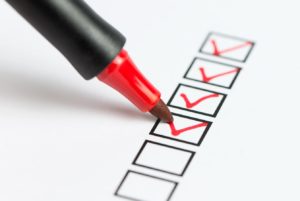Retail – Safety Checklist

PREAMBLE
RETAIL WORKERS
If you are a worker under age 25, you are more likely than more experienced workers to be injured. Most people think that retail is a safe place to work, and mostly it is. However, each year thousands of young retail workers are injured, and some even die. To protect yourself and others, you need to know these facts:
- Retail workplaces may have hazards that could injure you or make you ill.
- You can learn to identify and even prevent potential work hazards.
- Your supervisor should help you to stay safe by giving safety training in a language and words that you can understand.
What is Retail?
A retail business sells items directly to the people who use them. These are some examples of retail items and stores:
- Beverages and specialty food
- Building materials
- Department stores
- Home centers
- Motor vehicles and parts
- Nurseries/gardening supplies
- Pet supplies
- Sporting goods, hobbies, books, and music
- Supermarkets and smaller groceries
- Tire and auto stores
- Warehouse clubs and superstores
Safety in the Retail Workplace
Every workplace, including retail, has hazards.
The more you know about hazards, the more you can take part in creating a safe work environment. Each year about 100,000 young workers (16–24 years old) miss work after being hurt on the job, according to the Bureau of Labor Statistics. In 2012, about 23,000 of these young workers—or 1 of every 4—was injured in a retail job.
Injuries happen for many reasons. Young workers don’t always get enough training. They don’t always know what questions they should ask to stay safe. Sometimes they are asked to do jobs they’re not supposed to do (by law). However, if you become familiar with the best practices described here, you will be able to recognize potential hazards at your workplace and to work safely.
Understanding Retail
Before understanding the concept of retail, here are a few terminologies.
- Market –Any system or place where parties are engaged in exchange of either goods or services is called as market. The parties are often called as buyers and sellers. The seller offers his goods or services to the buyer who in return purchases it in exchange of money.
- Goods –Tangible (things which can be seen and touched) physical products which are transferred from a seller to the buyer (CONSUMER) to fulfill the latter’s need are called as goods.
The Supply chain
- Manufacturers –Manufacturers are the ones who are involved in production of goods with the help of machines, labour and raw materials.
- Wholesaler –The wholesaler is the one who purchases the goods from the manufacturers and sells to the retailers in large numbers but at a lower price. A wholesaler never sells goods directly to the end users.
- Retailer –A retailer comes at the end of the supply chain who sells the products in small quantities to the end users as per their requirement and need.
The end user goes to the retailer to buy the goods (PRODUCTS) in small quantities to satisfy needs and demands. The complete process is also called as SHOPPING.
- Shopping –The process of purchasing products by the consumer is called as shopping. However there are certain cases where shopping does not always end in buying of products. Sometimes individuals do go for shopping but return home empty handed. Such a shopping is merely for fun and is called window shopping. In window shopping, individuals generally go to the market, check out various options and their prices but do not buy anything. This kind of shopping helps to break the monotony…